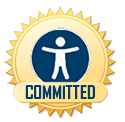When a client alleges duplicative causes of action against an attorney based upon different theories of liability, the court can dismiss those duplicative causes of action.
“ To state a claim for breach of fiduciary duty, a plaintiff must allege the existence of a fiduciary relationship, misconduct by the other party, and damages directly caused by that party’s misconduct ” (Castellotti v Free, 138 AD3d 198, 209 [1st Dept 2016]). “ [A] fiduciary relationship arises between two persons when one of them is under a duty to act or give advice for the benefit of another upon matters within the scope of the relation ” (Oddo Asset Mgt. v Barclays Bank PLC, 19 NY3d 584, 593-594 [2012], rearg denied 19 NY3d 1065 [2012] [internal quotation marks and citation omitted]). The existence of a duty is essential and may not be imposed unilaterally (see Marmelstein v Kehillat New Hempstead: The Rav Aron Jofen Community Synagogue, 45 AD3d 33, 36-37 [1st Dept 2008], affd 11 NY3d 15 [2008]). Whether a fiduciary relationship exists involves a fact-specific inquiry (see EBC I, Inc. v Goldman Sachs & Co., 5 NY3d 11, 19 [2005]). A claim for breach of fiduciary duty also requires “ the violation of some duty due to an individual, which duty is a thing different from a mere contractual obligation ” (see Batas v Prudential Ins. Co. of Am., 281 AD2d 260, 264 [1st Dept 2001] [internal quotation marks and citation omitted]).
A breach of fiduciary duty claim is duplicative of a legal malpractice claim when both are based upon the same facts and seek the same damages (see Barrett v Goldstein, 161 AD3d 472, 473 [1st Dept 2018]; accord Cohen, 115 AD3d at 513). As applied herein, plaintiff has established that the fiduciary duty counterclaim is grounded upon the same facts as the legal malpractice counterclaim. Defendant has neither attempted to distinguish the two counterclaims nor addressed why the second counterclaim should not be dismissed.
Adam Leitman Bailey, P.C. v Pollack, 63 Misc 3d 1229(A) [Sup Ct 2019]
R. A. Klass
Your Court Street Lawyer
[ duplicative causes of action ]






